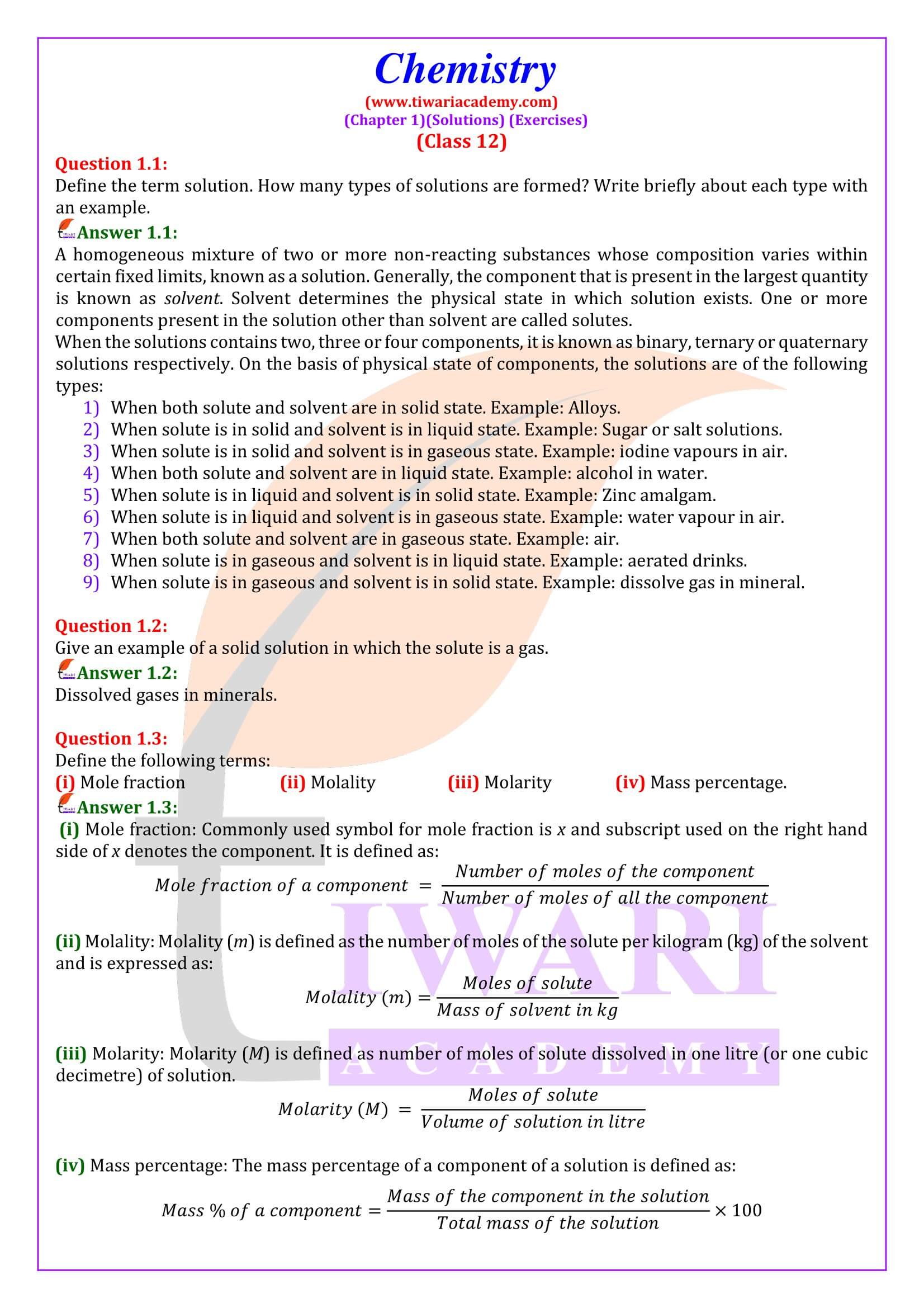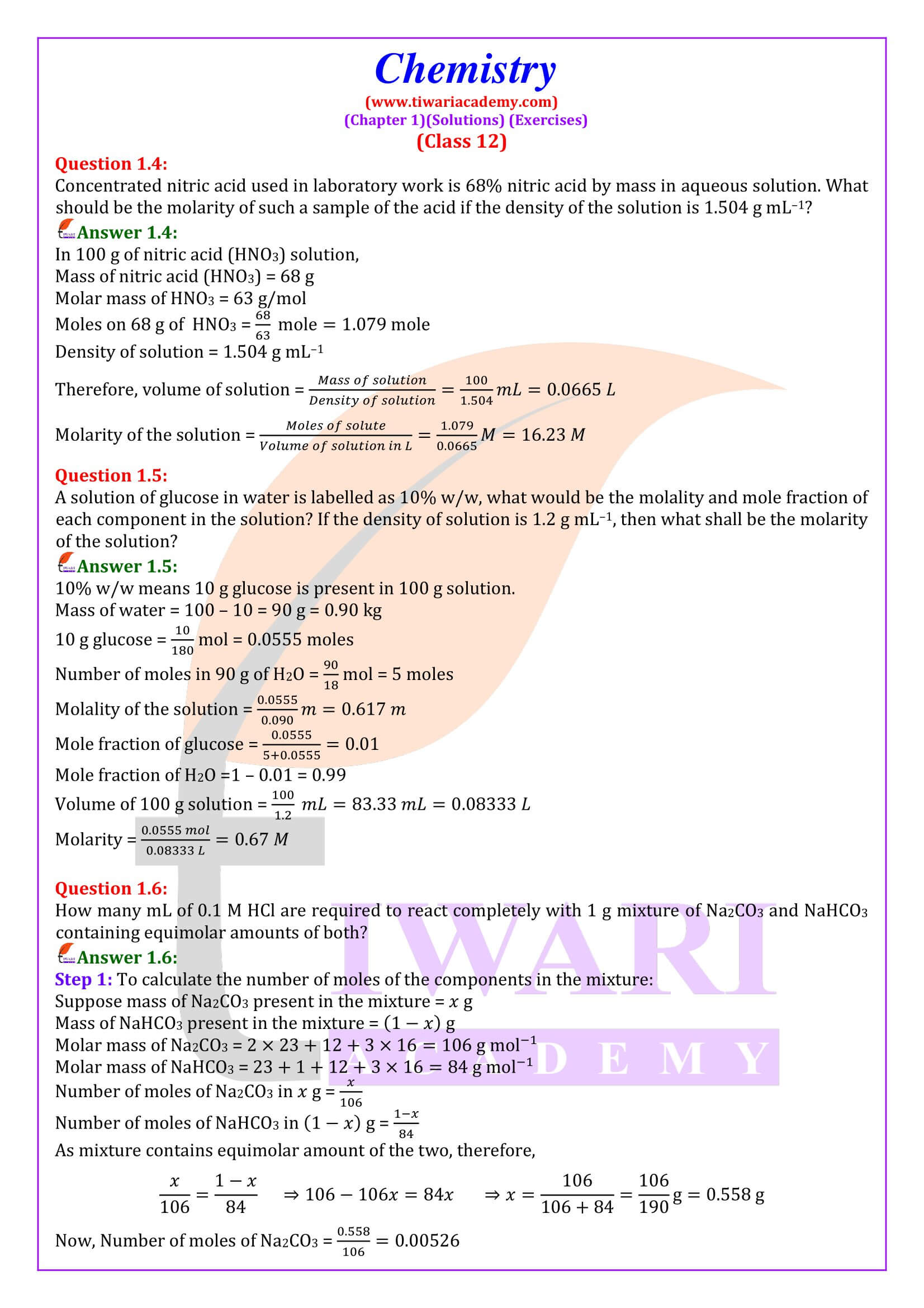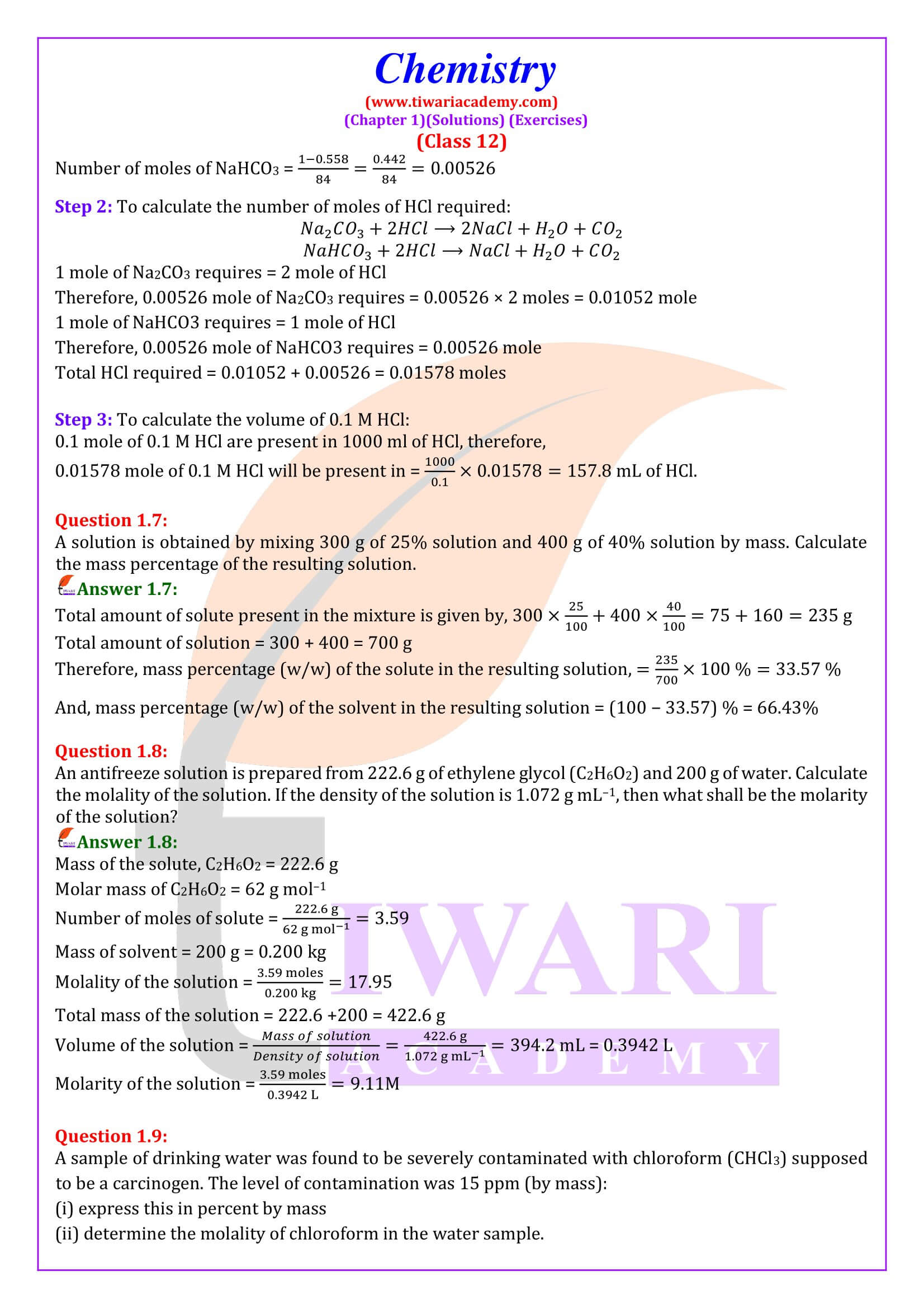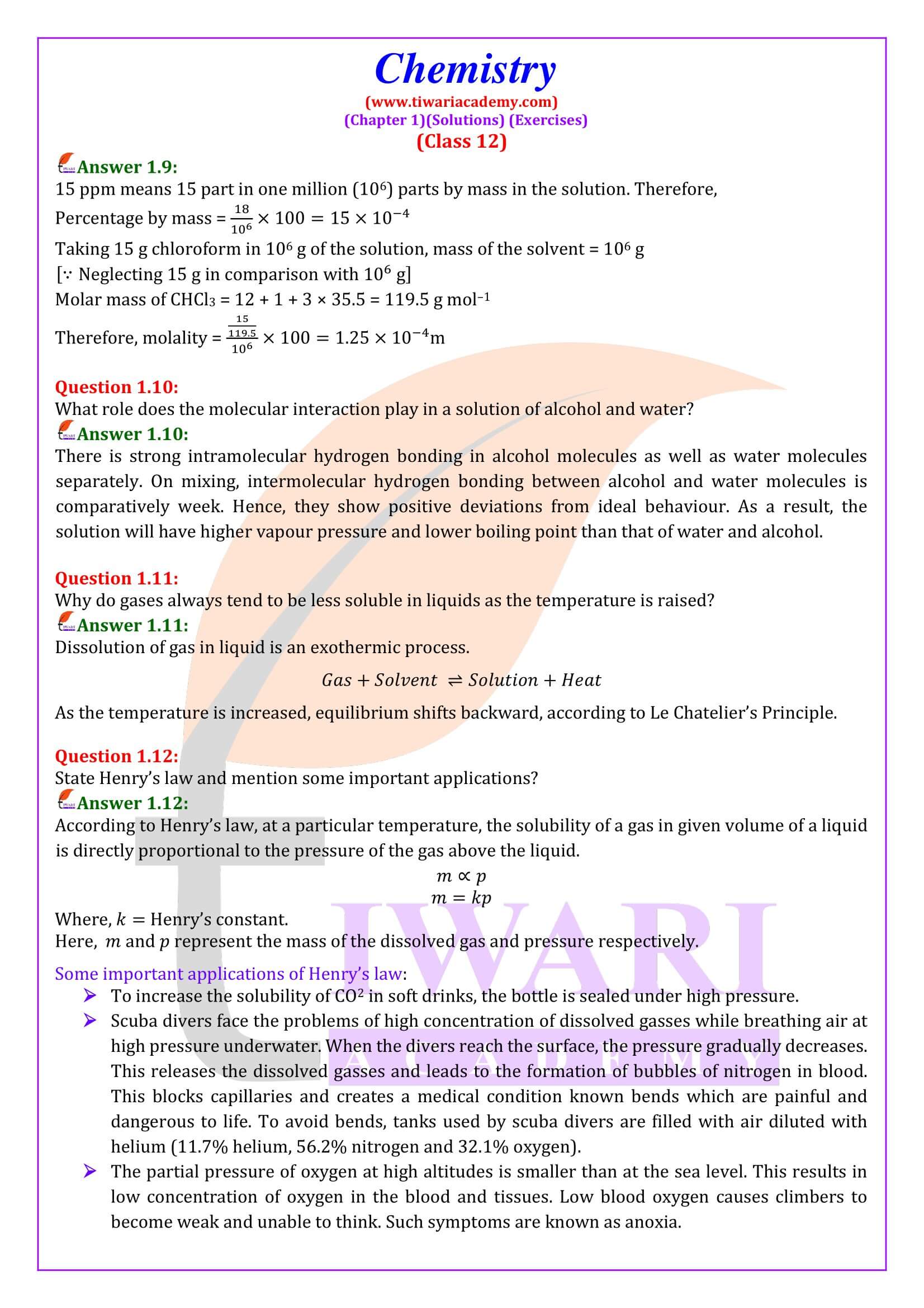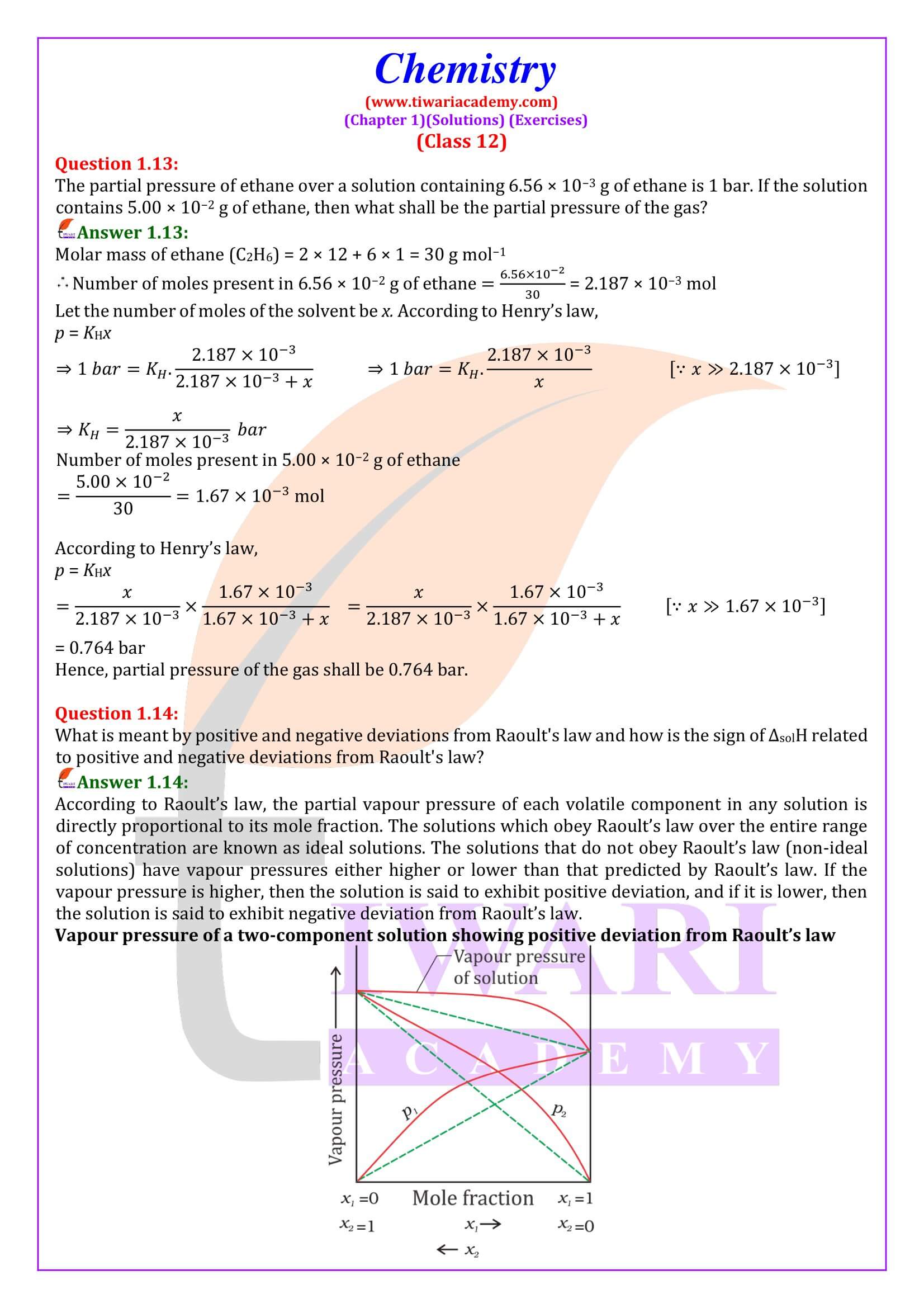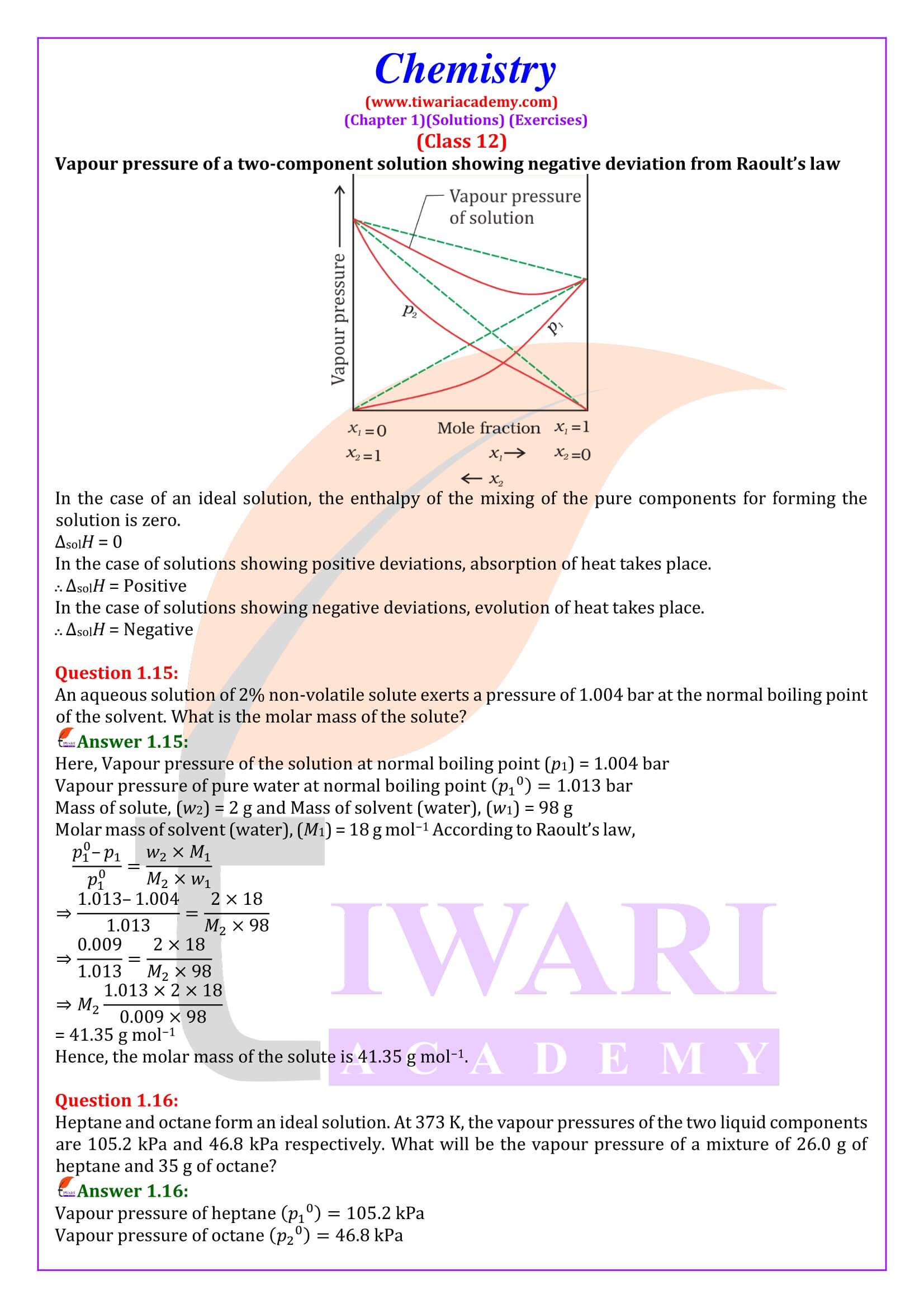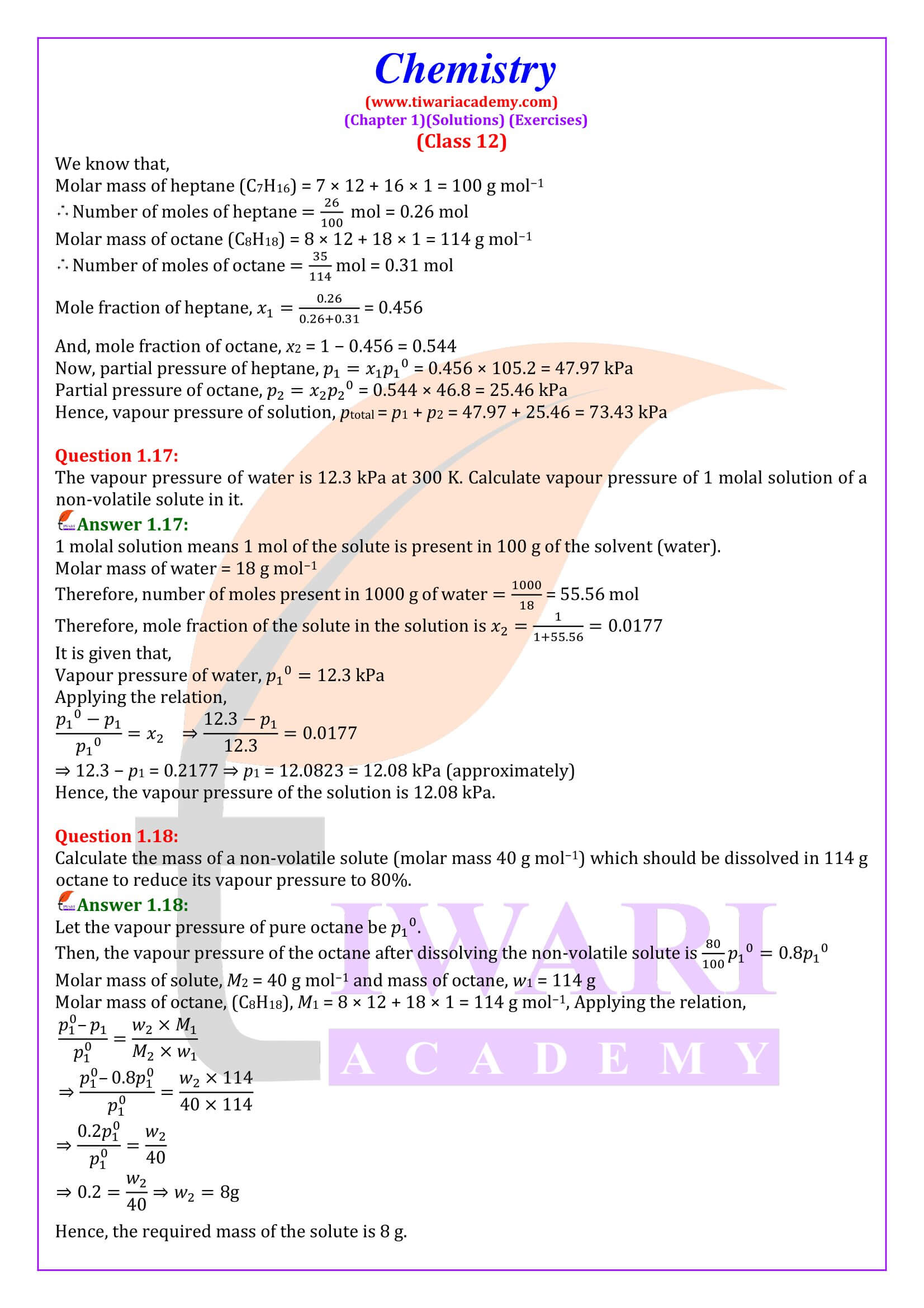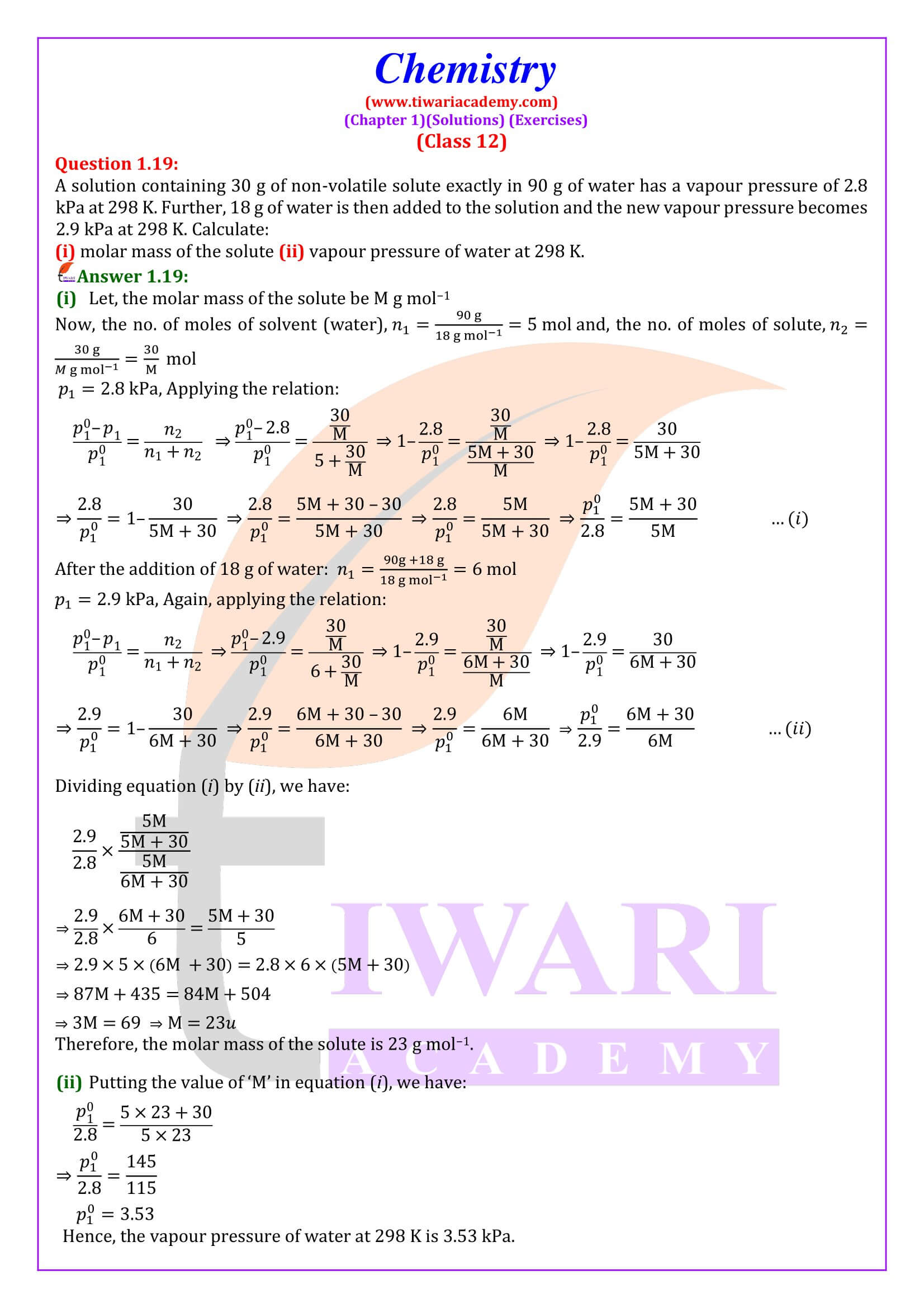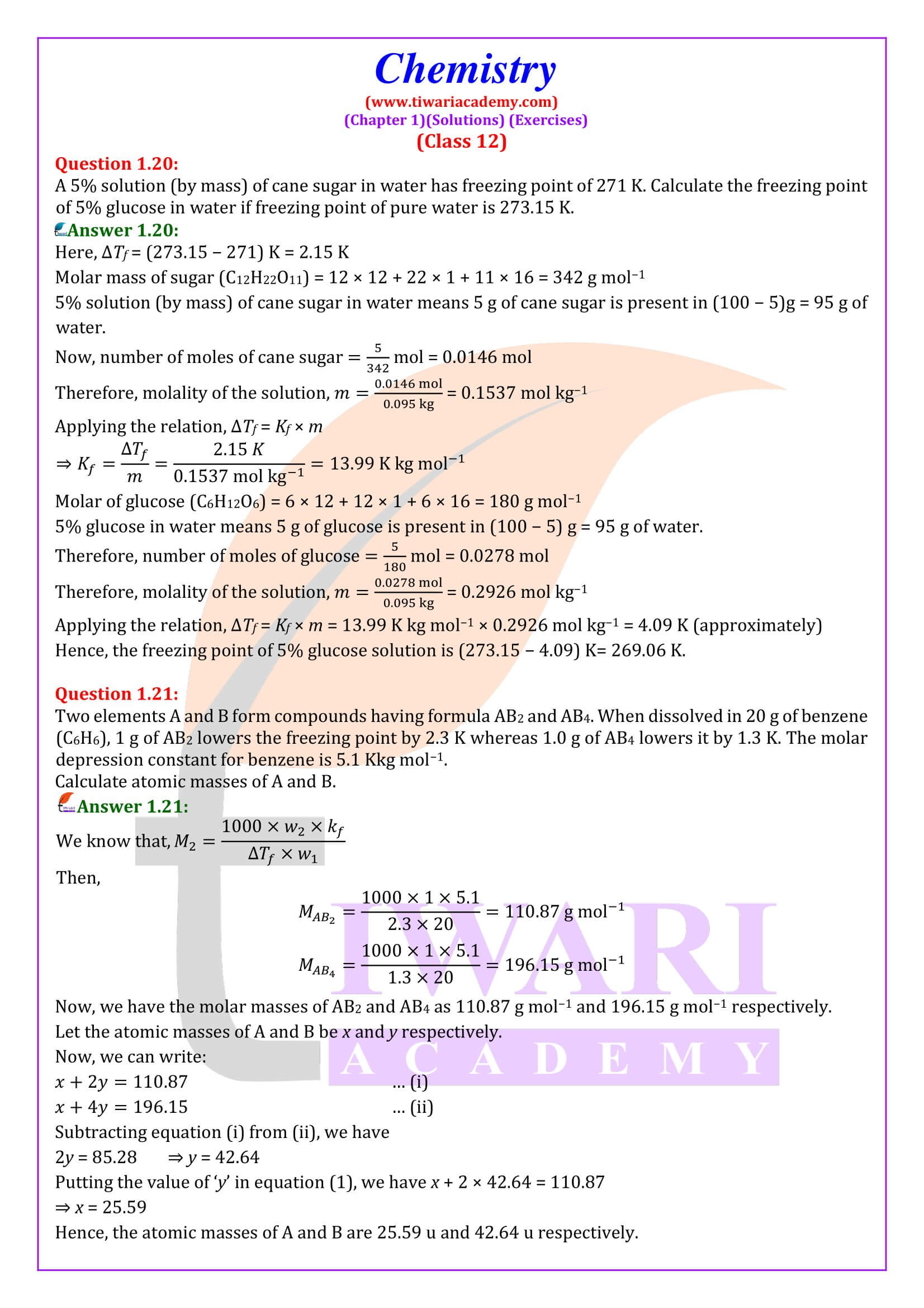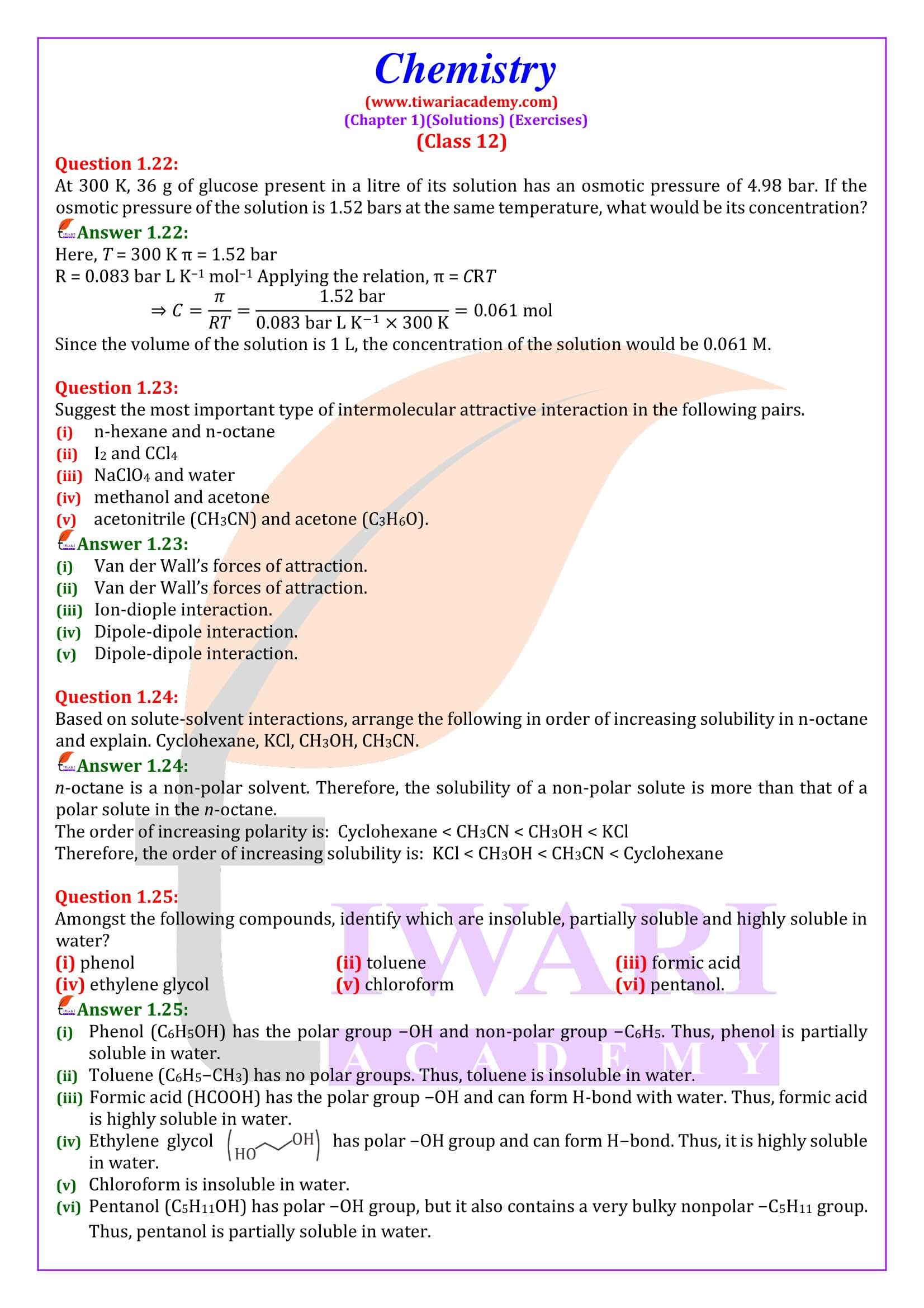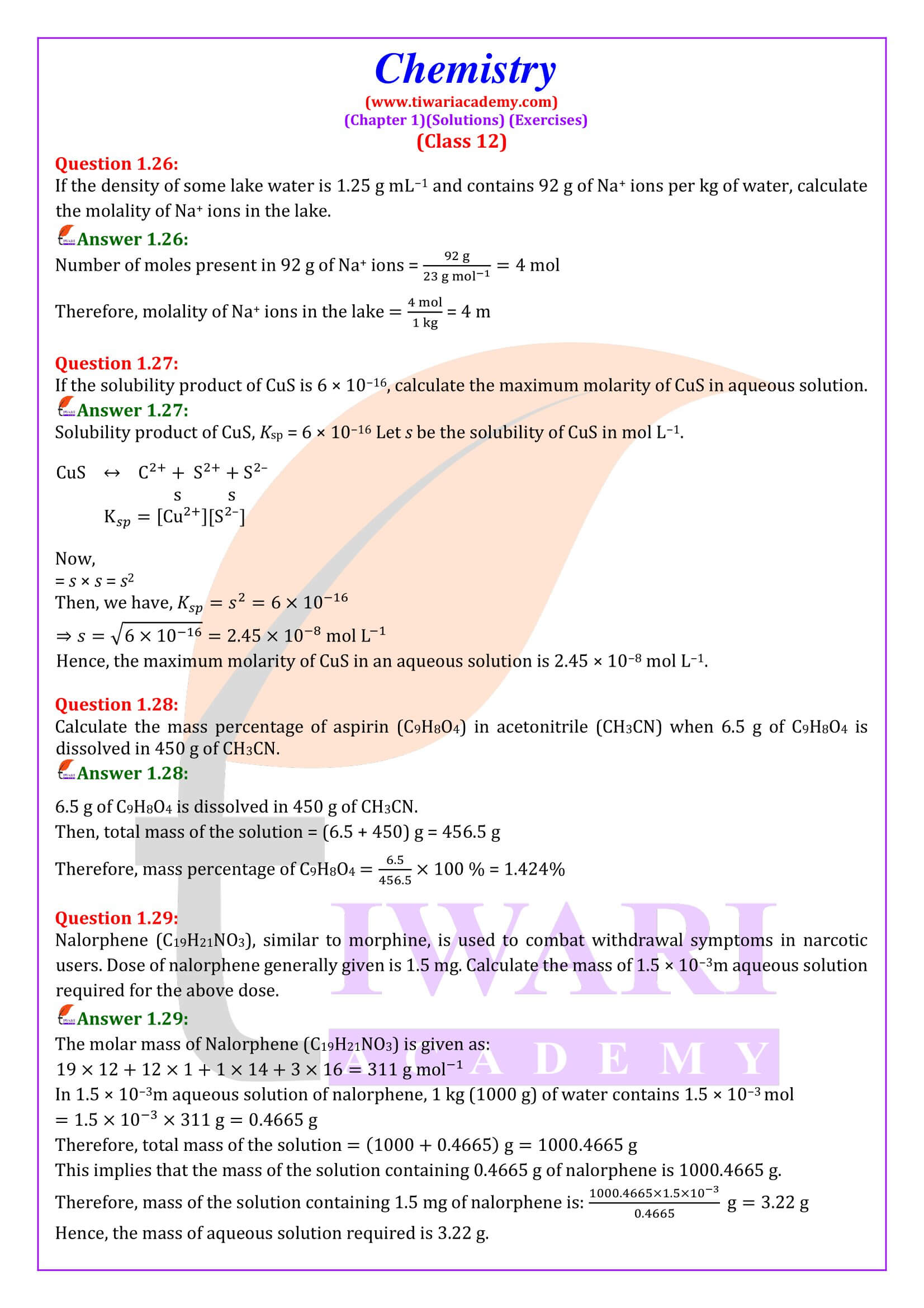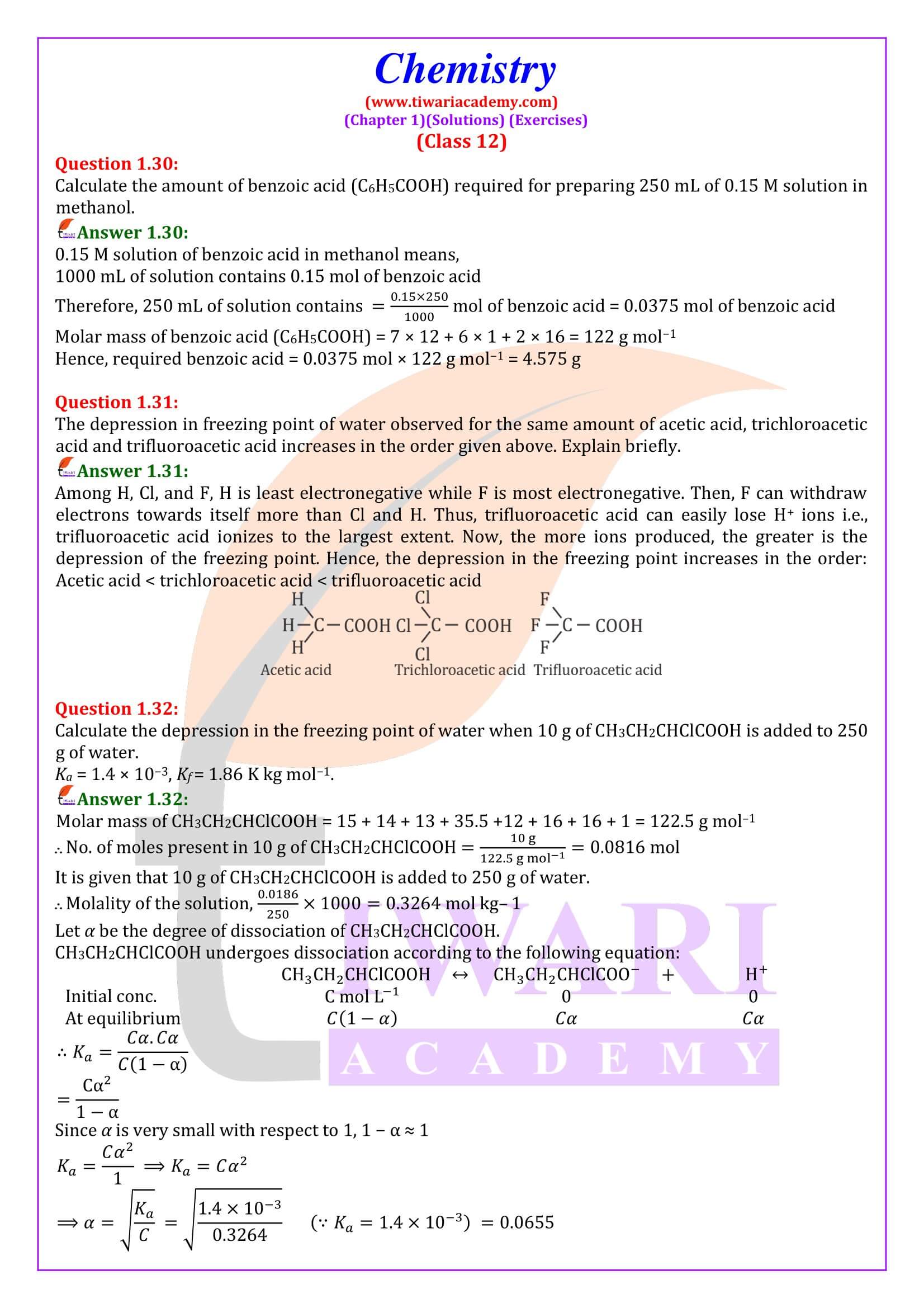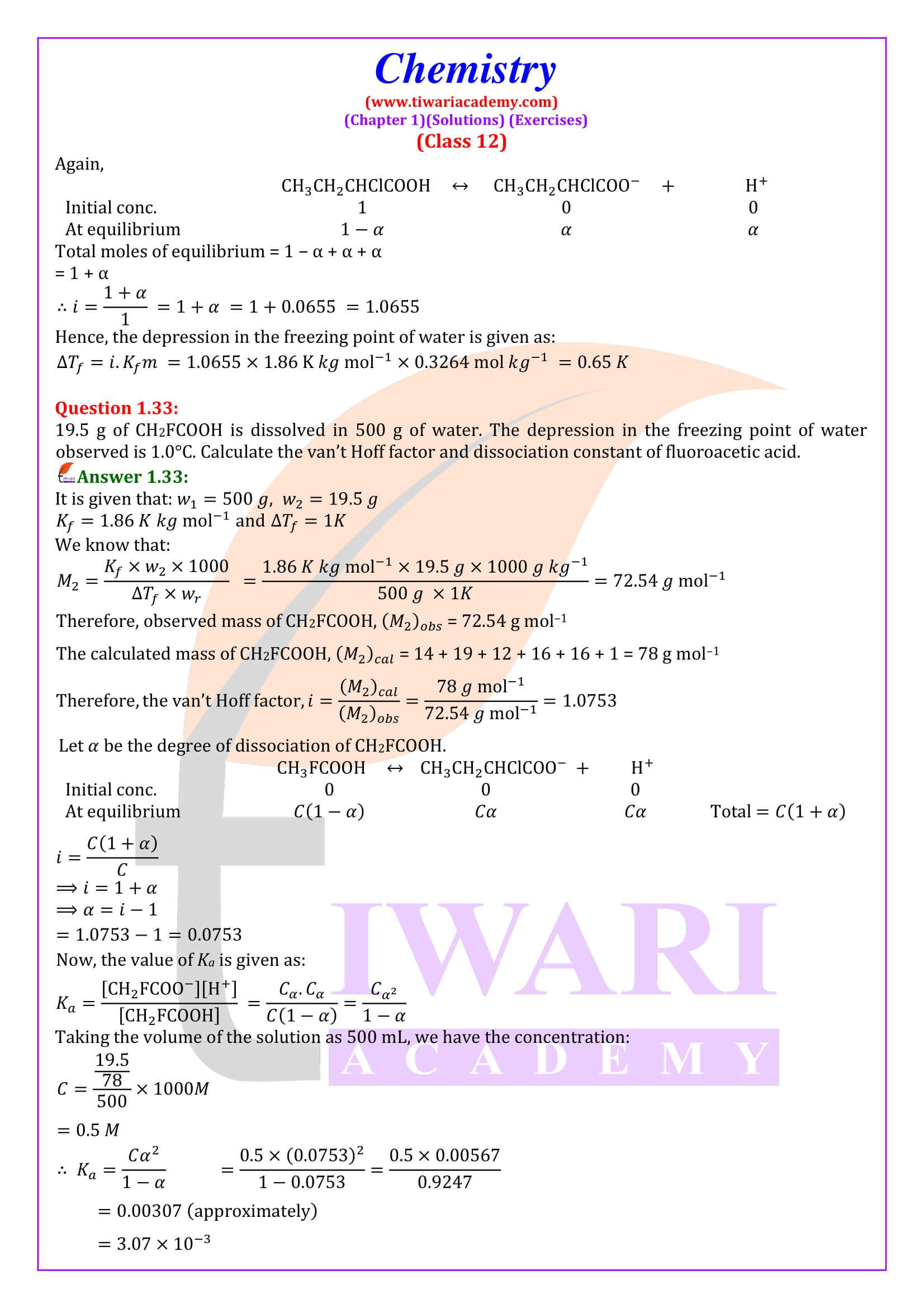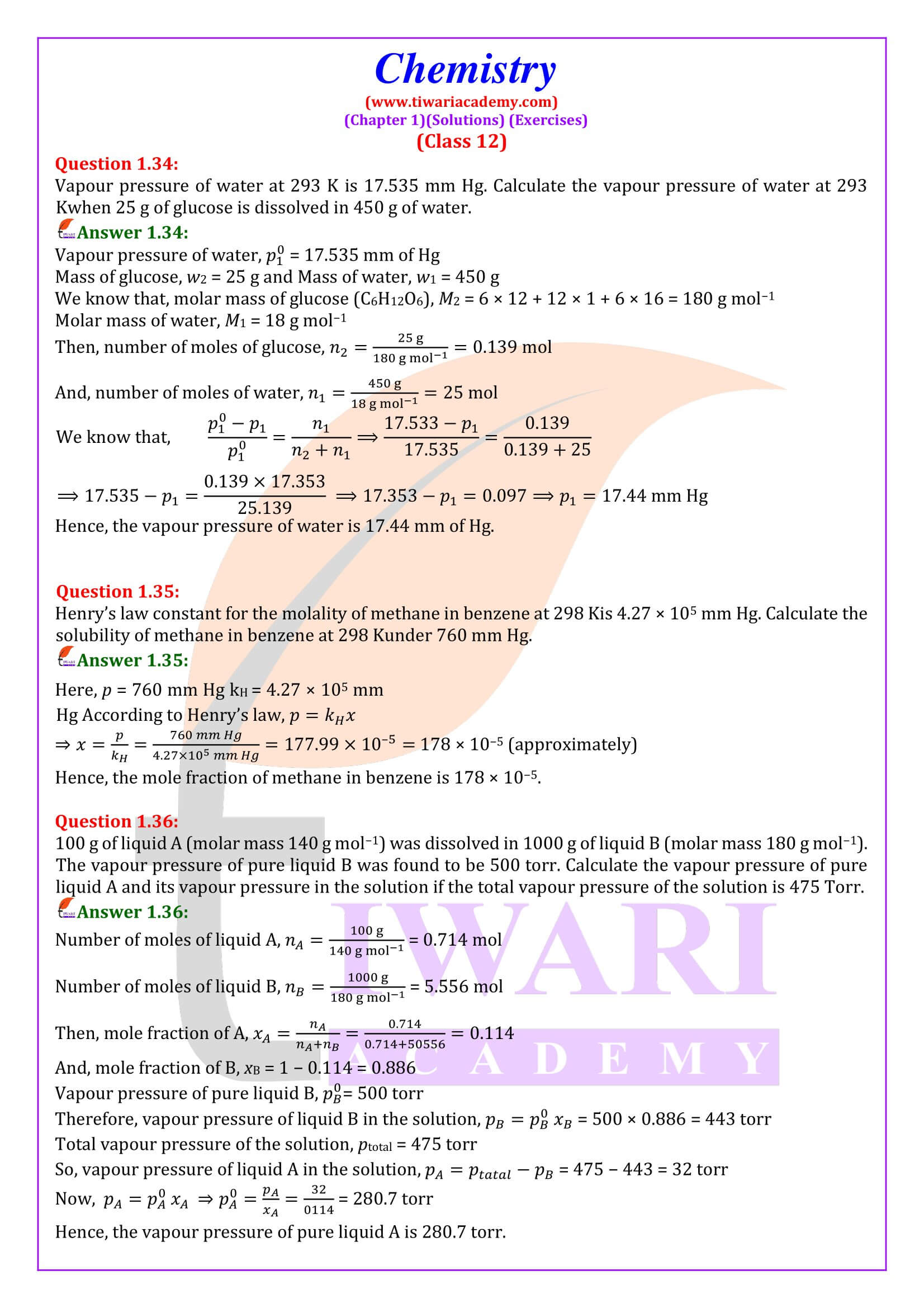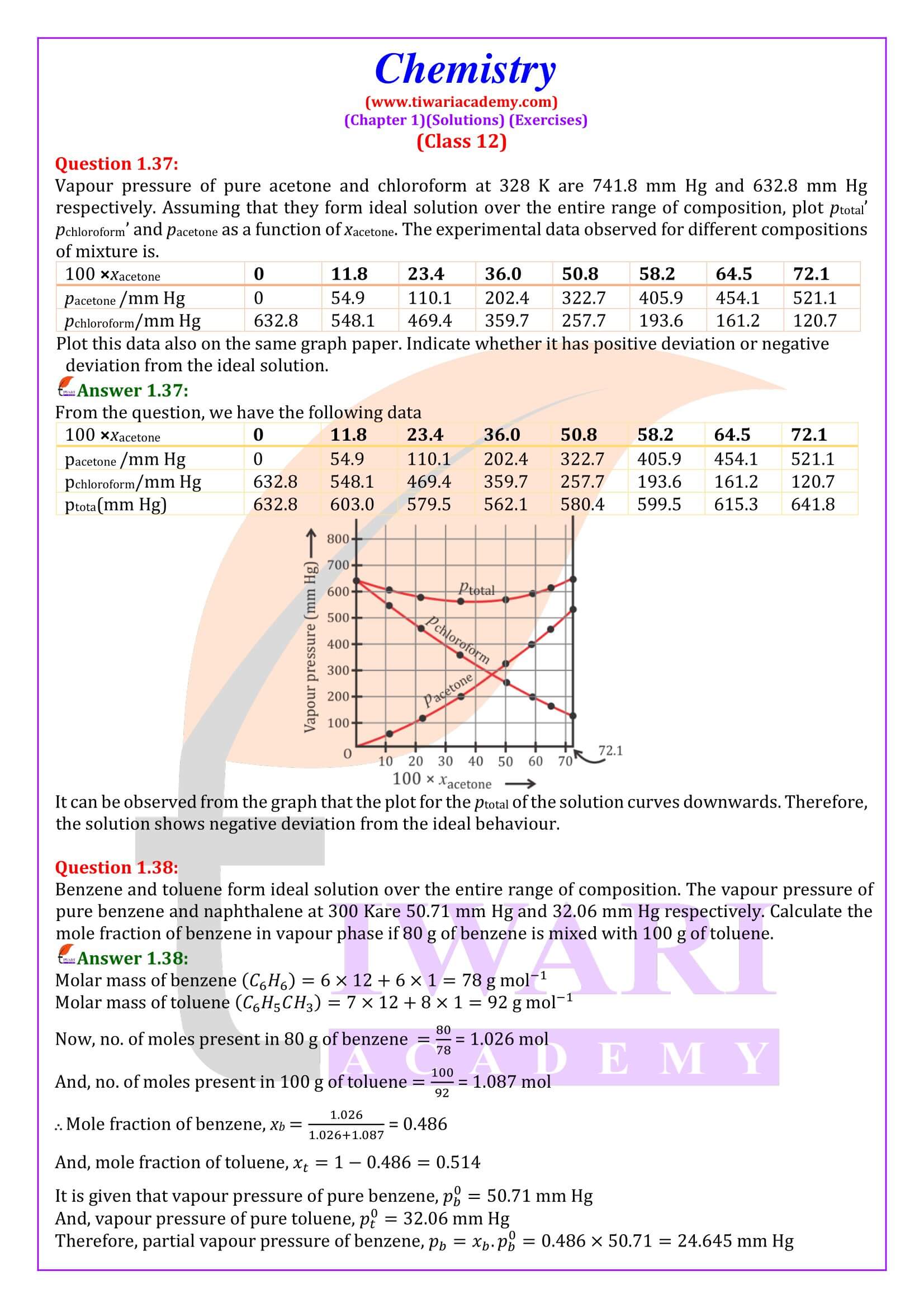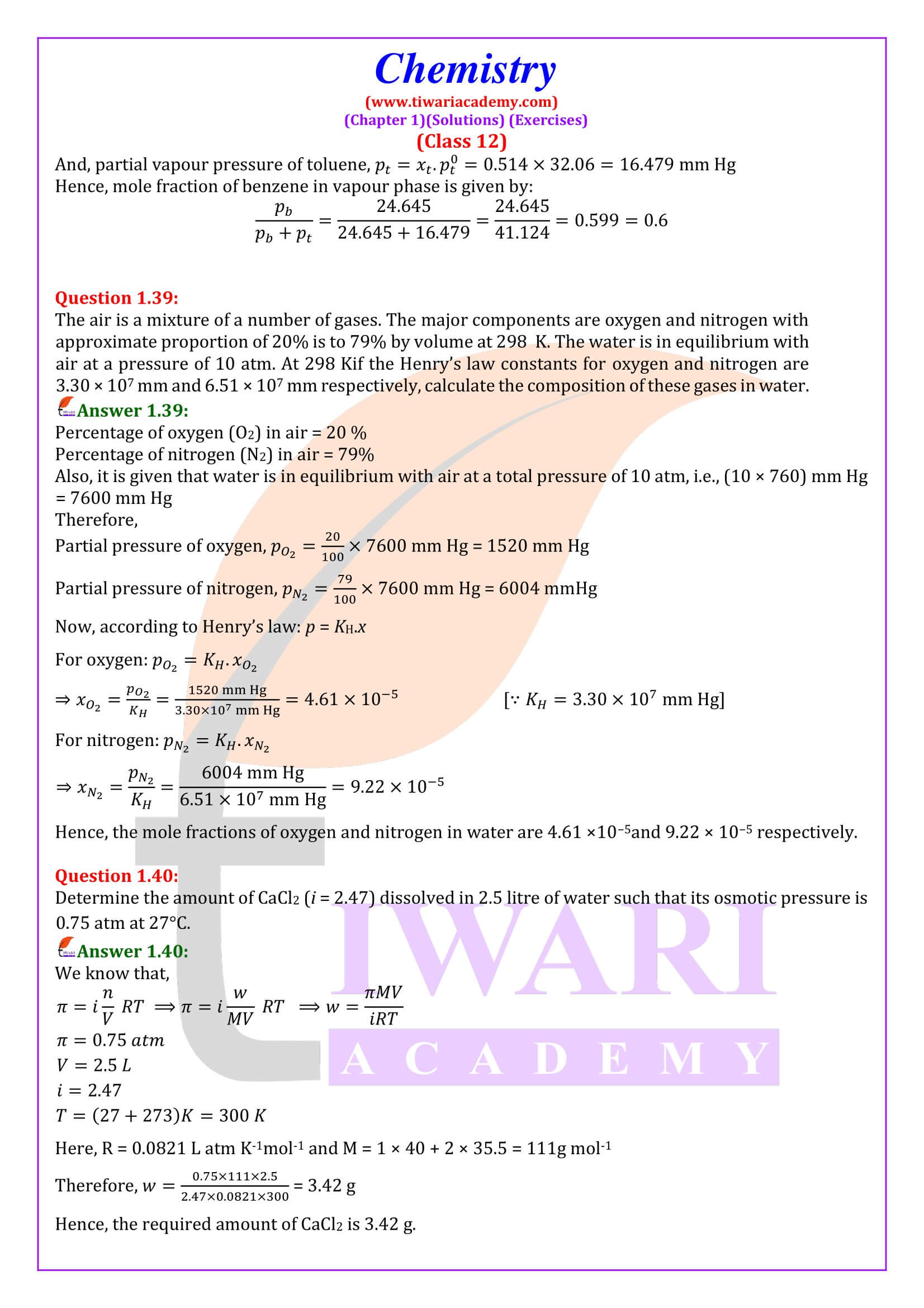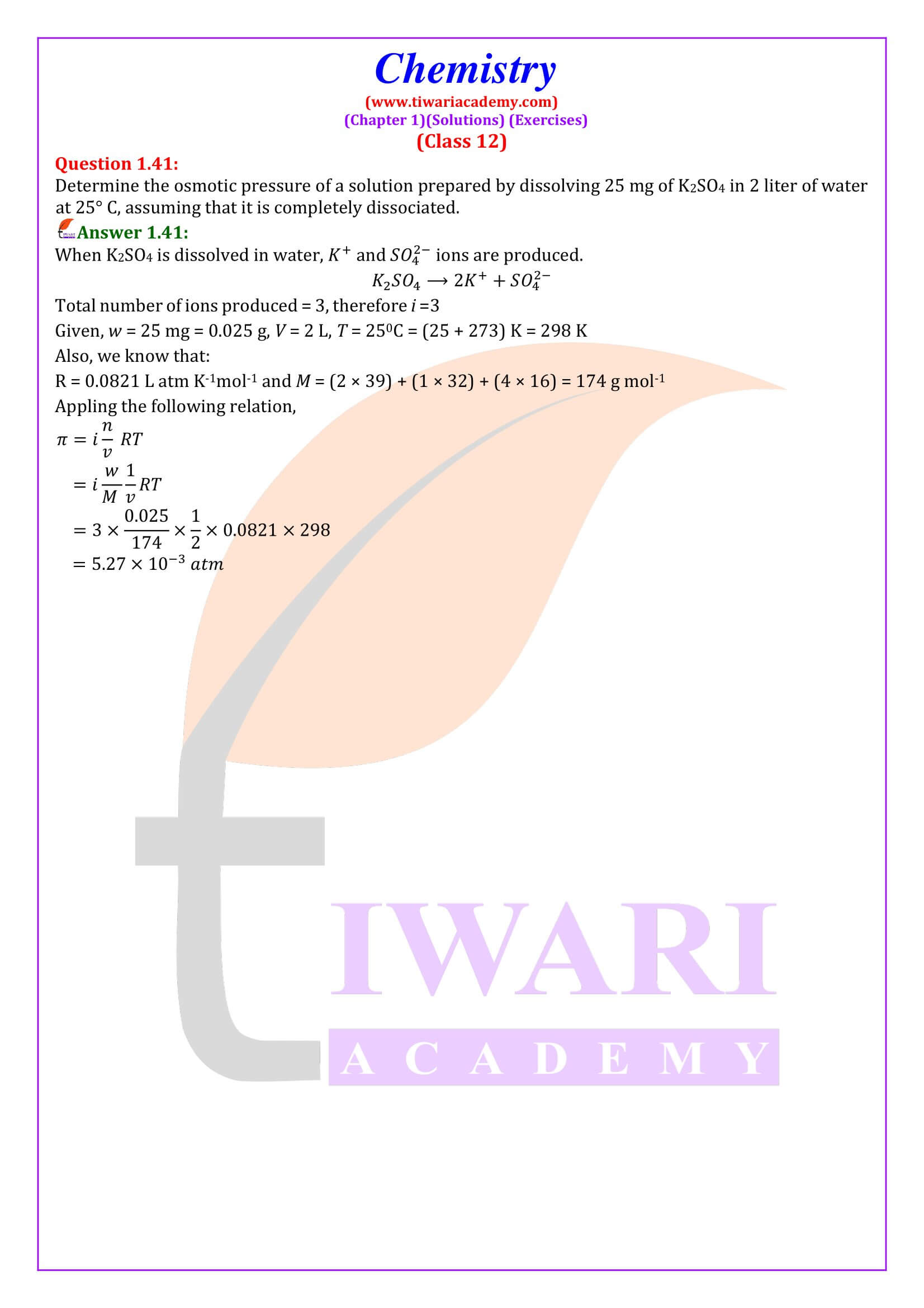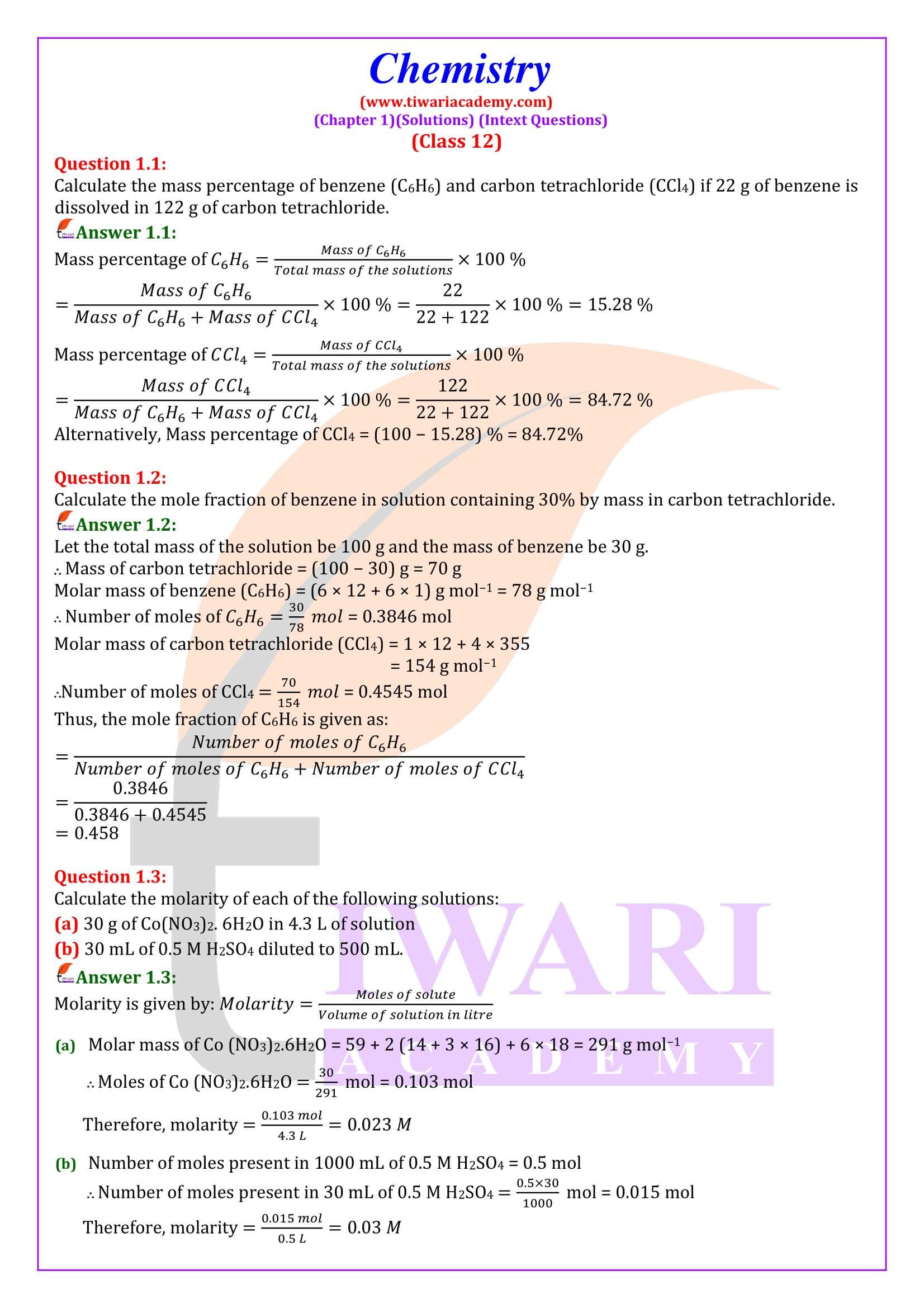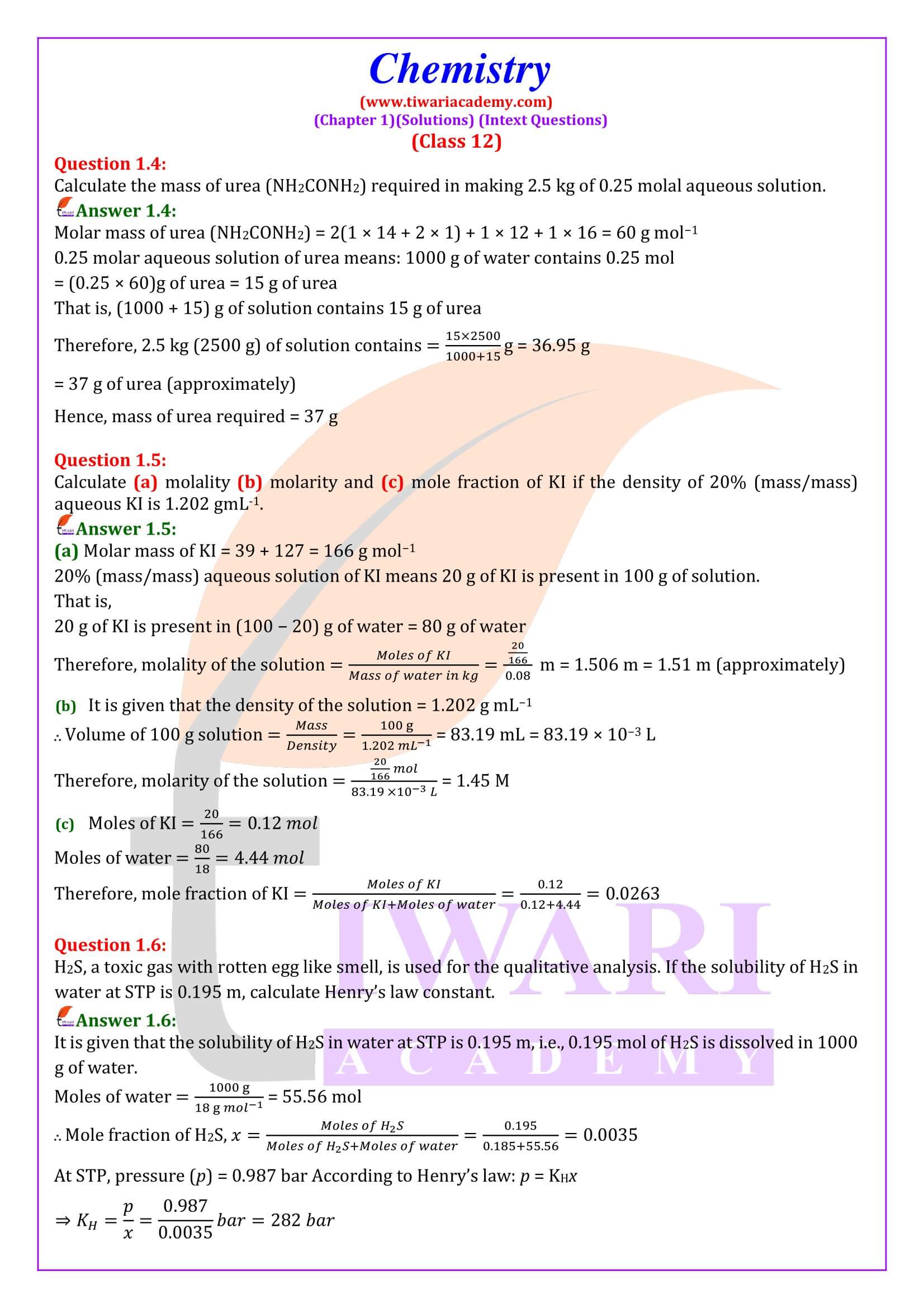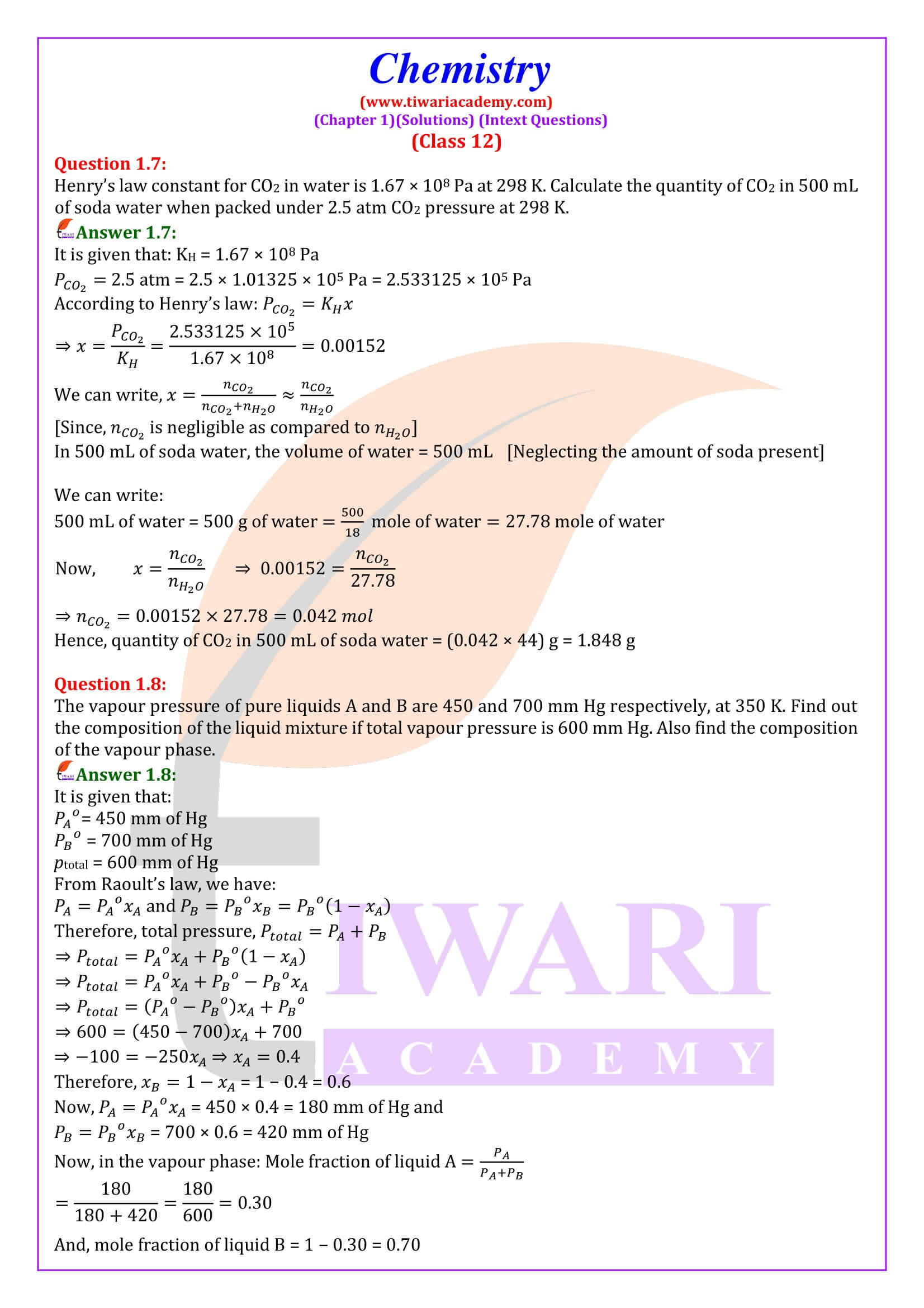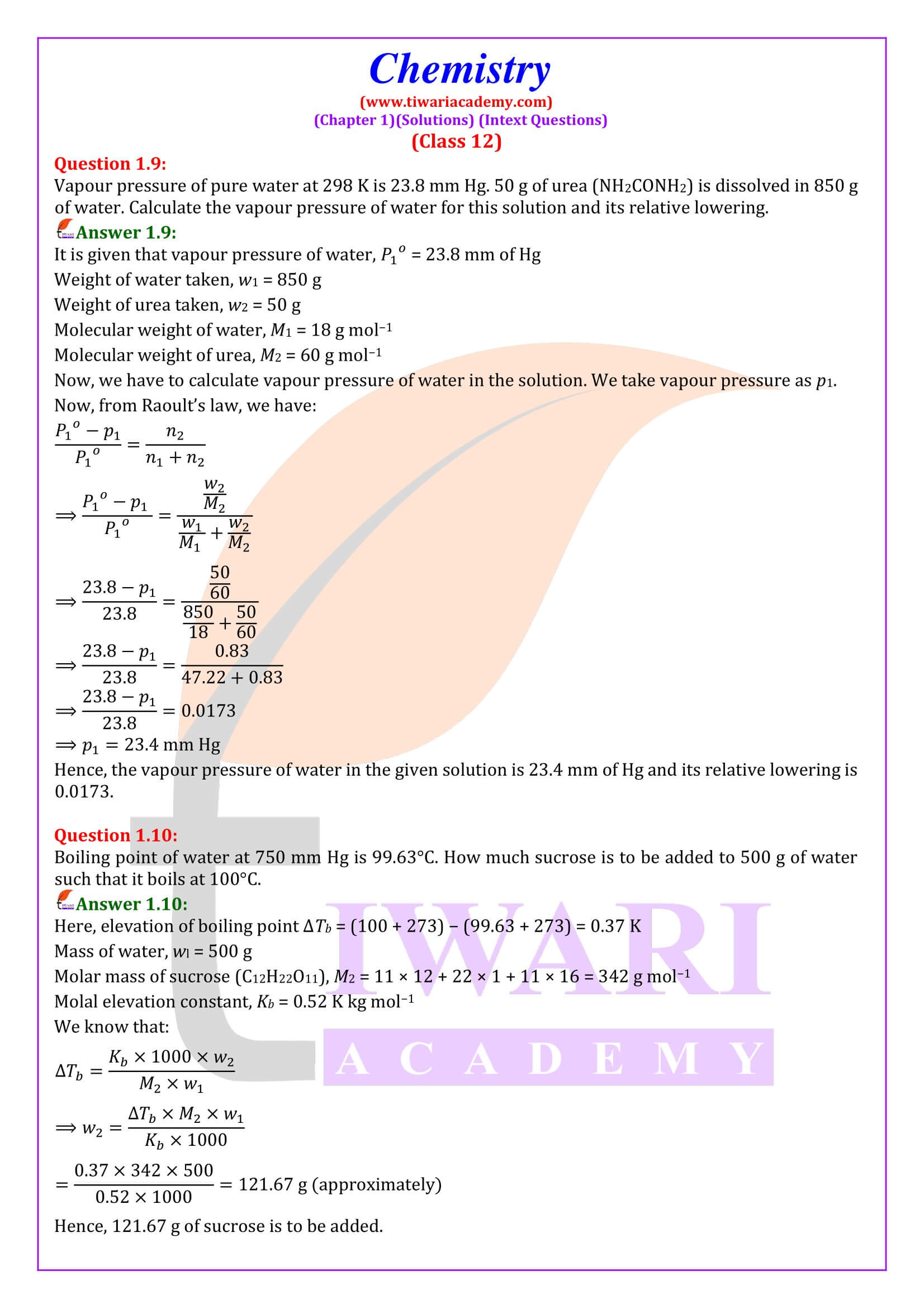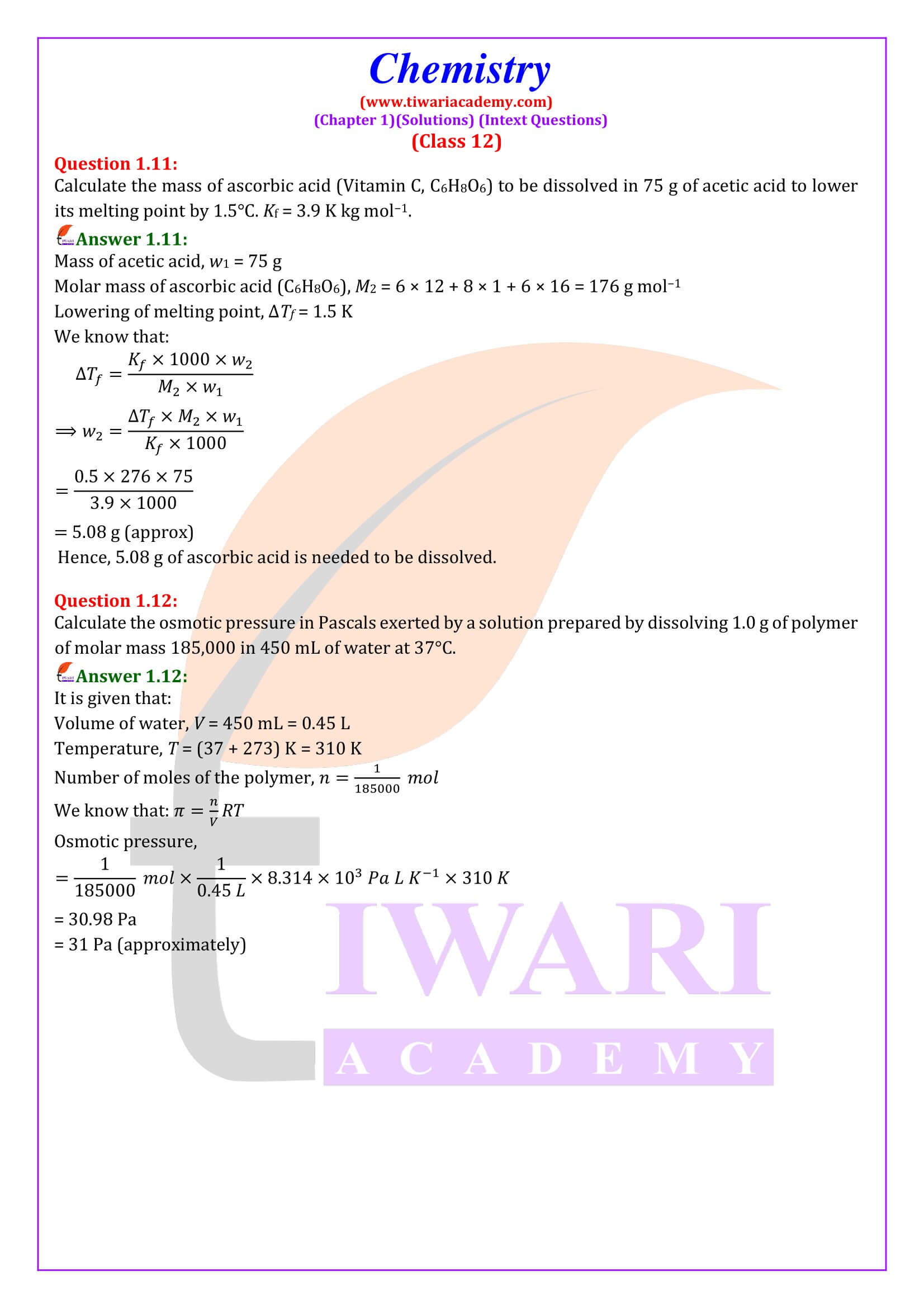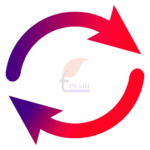NCERT Solutions for Class 12 Chemistry Chapter 1 Solutions Updated for New Academic Session 2025-26 in Hindi Medium and English Medium. Get here Exercises Questions and Intext Questions to view online or download in PDF format. These solutions are updated for 2025-26 exams for all boards using NCERT Books.
NCERT Solutions for Class 12 Chemistry Chapter 1
Class 12th Chemistry Chapter 1 Solutions Answers
- Class 12 Chemistry Chapter 1 Exercises
- Class 12 Chemistry Chapter 1 Intext
- Class 12 Chemistry Chapter 1 MCQ
- Class 12 Chemistry Chapter 1 in Hindi
- Class 12 Chemistry Chapter 1 NCERT Book
- Class 12 Chemistry Chapter 1 Revision Book
- Class 12 Chemistry Chapter 1 Study Materials
- Class 12 Chemistry Chapter 1 Assignment 1
- Class 12 Chemistry Chapter 1 Assignment 2
- Class 12 Chemistry Chapter 1 Assignment 3
- Class 12 Chemistry Chapter 1 Assignment 4
- Class 12 Chemistry Chapter 1 Level 1 Test 1
- Class 12 Chemistry Chapter 1 Level 2 Test 1
- Class 12 Chemistry Chapter 1 Level 3 Test 1
- Class 12 Chemistry NCERT Solutions
- Class 12 all Subjects NCERT Solutions
| Class: 12 | Chemistry |
| Chapter 1: | Solutions |
| Content: | Exercises Solutions, Notes, Tests, Study Material |
| Content Type: | Text, Videos, PDF and Images |
| Academic Session: | Year 2025-26 |
| Medium: | Hindi and English medium |
NCERT Solutions for Class 12 Chemistry Chapter 1 in PDF
NCERT Solutions for Class 12 Chemistry Chapter 1 in PDF format to free download is given below updated for new academic session 2025-26. Download NCERT Books and offline as well as online apps based on latest CBSE Syllabus.
Tips for Viva Questions Class 12 Chemistry
MULTIPLE CHOICE QUESTIONS WITH ANSWERS
1. Which of the following units is useful in relating concentration of solution with its vapour pressure?
(i) mole fraction
(ii) parts per million
(iii) mass percentage
(iv) molality
2. Maximum amount of a solid solute that can be dissolved in a specified amount of a given liquid solvent does not depend upon ____________.
(i) Temperature
(ii) Nature of solute
(iii) Pressure
(iv) Nature of solvent
3. An unripe mango placed in a concentrated salt solution to prepare pickle, shrivels because _____________.
(i) it gains water due to osmosis.
(ii) it loses water due to reverse osmosis.
(iii) it gains water due to reverse osmosis.
(iv) it loses water due to osmosis.
4. Low concentration of oxygen in the blood and tissues of people living at high altitude is due to ____________.
(i) low temperature
(ii) low atmospheric pressure
(iii) high atmospheric pressure
(iv) both low temperature and high atmospheric pressure
5. The value of Henry’s constant KH is _____________.
(i) greater for gases with higher solubility.
(ii) greater for gases with lower solubility.
(iii) constant for all gases.
(iv) not related to the solubility of gases.
6. At a given temperature, osmotic pressure of a concentrated solution of a substance _____________.
(i) is higher than that at a dilute solution.
(ii) is lower than that of a dilute solution.
(iii) is same as that of a dilute solution.
(iv) cannot be compared with osmotic pressure of dilute solution.
7. Considering the formation, breaking and strength of hydrogen bond, predict which of the following mixtures will show a positive deviation from Raoult’s law?
(i) Methanol and acetone.
(ii) Chloroform and acetone.
(iii) Nitric acid and water.
(iv) Phenol and aniline.
8. Which of the following statements is false?
(i) Units of atmospheric pressure and osmotic pressure are the same.
(ii) In reverse osmosis, solvent molecules move through a semipermeable membrane from a region of lower concentration of solute to a region of higher concentration.
(iii) The value of molal depression constant depends on nature of solvent.
(iv) Relative lowering of vapour pressure, is a dimensionless quantity.
9. Colligative properties depend on ____________.
(i) the nature of the solute particles dissolved in solution.
(ii) the number of solute particles in solution.
(iii) the physical properties of the solute particles dissolved in solution.
(iv) the nature of solvent particles.
10. On dissolving sugar in water at room temperature solution feels cool to touch. Under which of the following cases dissolution of sugar will be most rapid?
(i) Sugar crystals in cold water.
(ii) Sugar crystals in hot water.
(iii) Powdered sugar in cold water.
(iv) Powdered sugar in hot water.
Answers
1 (i)
2 (iii)
3 (iv)
4 (ii)
5 (ii)
6 (i)
7 (i)
8 (ii)
9 (ii)
10 (iv).
NCERT Books for all classes and subjects, Offline Apps 2025-26 based on new CBSE Syllabus. Ask your doubts related to NIOS or CBSE Board and share your knowledge with your friends and other users through Discussion Forum.
